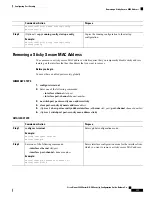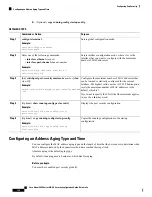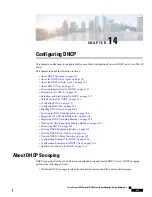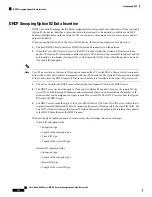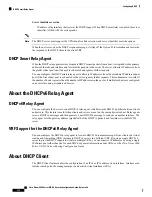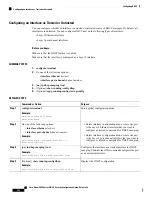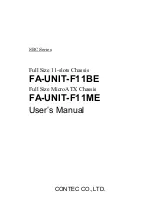
This figure shows the packet formats for the remote ID suboption and the circuit ID suboption. The Cisco
NX-OS device uses the packet formats when you globally enable DHCP snooping and when you enable
Option 82 data insertion and removal. For the circuit ID suboption, the module field is the slot number of the
module.
Figure 9: Suboption Packet Formats
About the DHCP Relay Agent
DHCP Relay Agent
You can configure the device to run a DHCP relay agent, which forwards DHCP packets between clients and
servers. This feature is useful when clients and servers are not on the same physical subnet. Relay agents
receive DHCP messages and then generate a new DHCP message to send out on another interface. The relay
agent sets the gateway address (giaddr field of the DHCP packet) and, if configured, adds the relay agent
information option (Option 82) in the packet and forwards it to the DHCP server. The reply from the server
is forwarded back to the client after removing Option 82.
After you enable Option 82, the device uses the binary ifindex format by default. If needed, you can change
the Option 82 setting to use an encoded string format instead.
When the device relays a DHCP request that already includes Option 82 information, the device forwards the
request with the original Option 82 information without altering it.
Note
DHCP Relay Agent Option 82
You can enable the device to insert and remove Option 82 information on DHCP packets that are forwarded
by the relay agent.
Cisco Nexus 9000 Series NX-OS Security Configuration Guide, Release 9.x
331
Configuring DHCP
About the DHCP Relay Agent

